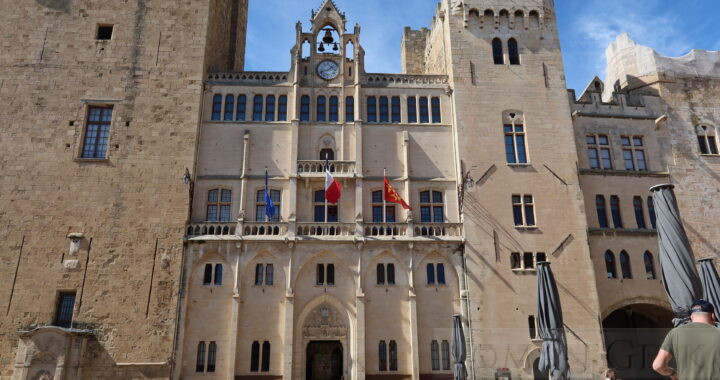- Narbonne is a cathedral city located on the Canal de la Robine which connects it to the River Aude and to the Mediterranean. It is in the Occitanie Region of southern France.
- Narbo was founded in 118 BCE and became the capital of the Province of Gallia Transalpina or Provincia Nostra (Our Province).
History
- The Province was renamed Gallia Narbonensis, probably in c. 22 BCE.
- Narbo became a major port during the Roman Empire, with an overland road to the Atlantic, the Via Aquitania and a road to Spain, the Via Domitia.
- The merchants of Narbo had their own offices at Ostia on the Square of the Merchants or Piazzale delle Corporazioni (statio 32).
- During the Crisis of the Third Century (235-284 CE), the Roman Emperors Carus (282-283 CE), his sons Carinus (283-284 CE) and Numerian (283-284 CE) were all born in Narbonne.
- Water for Narbo was supplied by an underground aqueduct from La Clape, possibly called the Narbo Martium.
Port la Nautique
- Port la Nautique was the Roman Port for Narbonne, capital of the Roman Province of Gallia Narbonensis.
- It was located on the Etang, 2.5 miles (4km) to the south of Narbonne. No Remains are visible today.
- Its importance lay as a terminus for the Trade with the Atlantic (via Bordeaux and Toulouse) and with Spain and Italy.
- Roman shipwrecks have been found which revealed the trade between Narbo, Spain and Italy.
- Port-Vendres I
- This is a 45 feet (13.9m) long, 4th century CE vessel.
- Port-Vendres II and II
- These wrecks were found lying on top of each other with only the remains of the cargo visible. The cargo was of amphorae from Gaul, but not specific to a region.
- Port-Vendres IV
- Dating to 30-20 BCE, it held amphorae of wine from Spain and Italy known to be destined for Gaul, proving Narbo to be the centre of this trade.
- Port-Vendres I
Roman Sites
- Horreum
- This was an underground warehouse for storing grain.
- Pont des Marchands
- The Roman Bridge carrying the Via Domitia over the Canal de la Robine. The Roman Bridge lies under the shops and houses built over it. To see it, take the footpath along the Canal and walk under the bridge.
- Via Domitia
- A visible excavation shows the Roman Flagstones in the Place de L’Hotel de Ville.
- Canal de la Robine
- follows the course of the Ancient Canal
- Port la Nautique.
- A giant ship’s anchor and many other artefacts brought up by divers, are on display in the Archeological Museum.
- Narbonne Roman Lighthouse
- A possible location of a Roman Lighthouse, not open to the public.
Museums
- Narbo Via (opened 21st May 2021)
- This new museum houses a history of the Roman Period which combines various collections from five locations.
- Amongst the 15,000 artefacts are 1,000 funerary stones that were reused in the medieval city wall, which the Museum has arranged into several Themes:
- A Lapidary Wall (carved Roman stones)
- Funerary Reliefs
- Residential Art (wall and ceiling paintings, Mosaics and Statues)
- Port la Nautique (excavated artefacts from the Roman harbour)
- Sarcophagii (Early Christian)
Roman Roads
Narbonne, France

